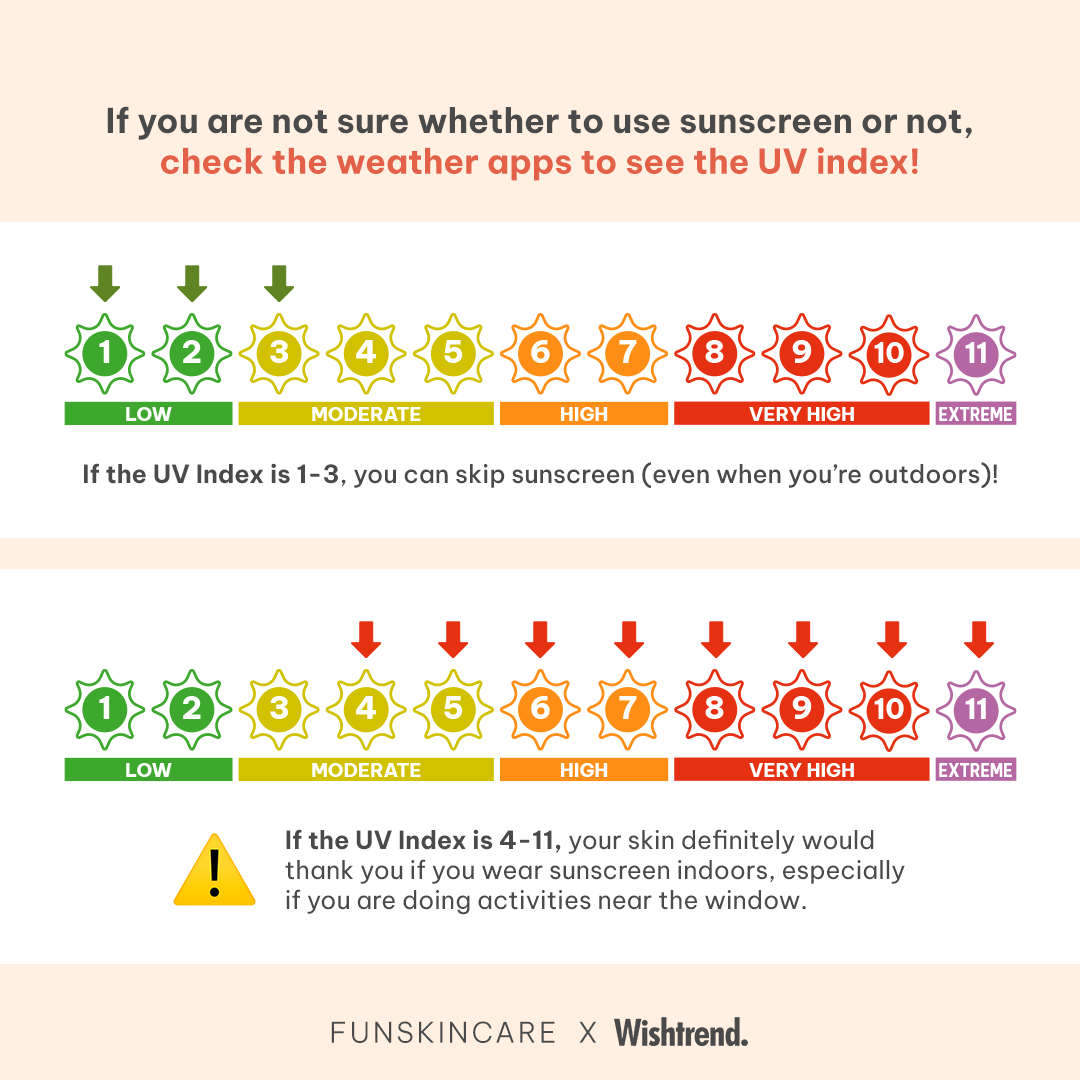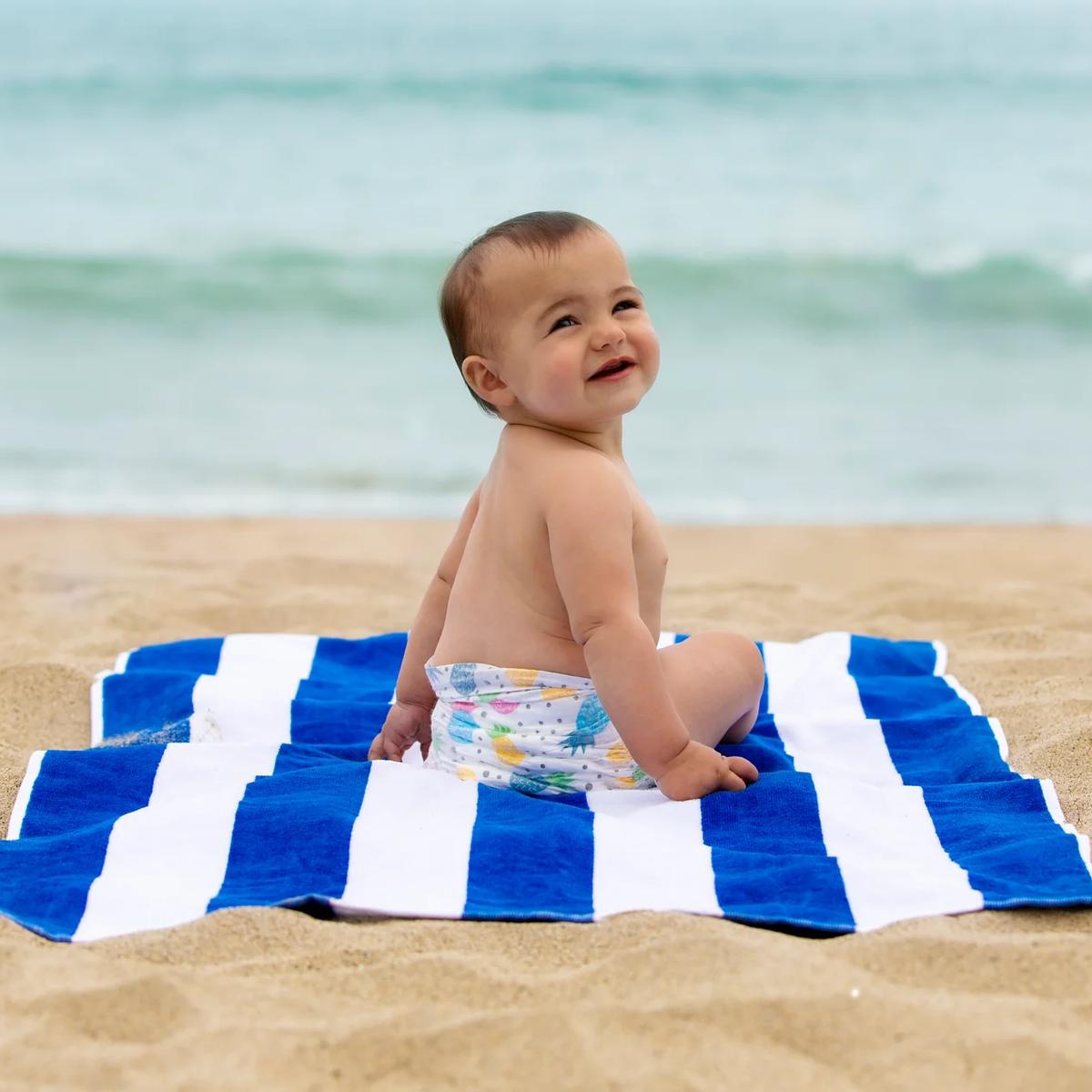
Should You Apply Sunscreen on Infants?
Should you apply sunscreen on infants? It’s a question many parents grapple with, balancing the need for sun protection with concerns about potentially harmful chemicals and sensitive skin. This delicate balance is crucial, as infant skin is significantly more vulnerable to sun damage than adult skin due to its thinner epidermis and less developed barrier function. Understanding the risks and benefits of sunscreen application, along with safe application techniques and alternatives, is key to keeping your little one safe in the sun.
This post will delve into the science behind sun protection for infants, examining the unique characteristics of their skin, exploring safe sunscreen options (and their potential drawbacks), and outlining alternative sun protection methods. We’ll also cover crucial information on when to seek medical attention and provide practical tips for making sun protection a smooth and comfortable experience for both you and your baby.
Infant Skin Sensitivity and Sunscreen
Protecting your little one’s delicate skin from the sun’s harmful rays is crucial. Infant skin is uniquely vulnerable, requiring a different approach to sun protection than that used for adults. Understanding these differences is key to ensuring your baby’s safety and well-being.Infant skin possesses several characteristics that make it more susceptible to sun damage than adult skin. Its thinner epidermis (the outer layer of skin) offers less protection against ultraviolet (UV) radiation.
Additionally, the immature barrier function of infant skin means it’s less effective at preventing water loss and penetration of harmful substances, including UV rays. This increased permeability makes infants more prone to sunburn and other forms of sun damage.
Differences in Skin Barrier Function and Sensitivity
Adult skin has a fully developed stratum corneum, the outermost layer of the epidermis, which acts as a robust barrier against environmental stressors. In contrast, an infant’s stratum corneum is thinner and less organized, making it more permeable to UV radiation and irritants. Infant skin also has a lower melanin concentration, the pigment responsible for protecting against UV radiation.
This means less natural protection against the sun’s harmful effects. Furthermore, infant skin is more prone to inflammation and irritation, making reactions to sunscreens more likely.
Sunburn Risk Comparison: Infants vs. Adults
The risk of sunburn is significantly higher in infants than in adults. A sunburn in infancy can have long-term consequences, increasing the risk of skin cancer later in life. Adult skin, while still susceptible to sun damage, generally has a more developed ability to repair itself and a thicker protective layer. Infants’ developing skin is far more vulnerable to the damaging effects of UV radiation, making sun protection absolutely vital.
Even a mild sunburn in an infant can cause significant discomfort and dehydration.
Sunscreen Types and Suitability for Infants
Choosing the right sunscreen for your infant is crucial. It’s vital to select a product formulated specifically for sensitive skin and free from potentially irritating ingredients.
| Sunscreen Type | Active Ingredients | SPF | Potential Irritants |
|---|---|---|---|
| Mineral Sunscreen | Zinc oxide, titanium dioxide | Broad spectrum, typically SPF 30 or higher | Generally well-tolerated, but some infants may experience mild irritation. Check for purity and lack of added fragrances. |
| Chemical Sunscreen | Oxybenzone, avobenzone, octinoxate, etc. | Broad spectrum, varying SPF levels | Higher risk of irritation and allergic reactions in infants due to the presence of chemical filters. Some chemical filters are suspected endocrine disruptors, making mineral sunscreens a safer choice for infants. |
Sunscreen Ingredients and Potential Risks
Protecting your little one from the sun’s harmful rays is crucial, but choosing the right sunscreen can feel overwhelming. Many sunscreens contain chemicals that, while generally considered safe for adults, might pose potential risks for infants due to their delicate skin and developing systems. Understanding these ingredients and their potential effects is key to making informed decisions.
Sunscreen chemicals are designed to absorb or reflect UV radiation. However, some of these chemicals can be absorbed into the bloodstream, raising concerns about potential long-term health effects, particularly in infants whose bodies are still developing. The level of absorption and the resulting consequences are areas of ongoing research, and the results are often debated. It’s important to note that the research is complex, with some studies showing minimal absorption and others suggesting potential concerns.
Oxybenzone and Octinoxate Concerns
Oxybenzone and octinoxate are two common chemical UV filters found in many sunscreens. Studies have shown that these chemicals can be absorbed through the skin and detected in the bloodstream. While the long-term effects of this absorption are not fully understood, some research suggests potential links to hormonal disruption and other health issues. Infants, with their thinner skin and greater surface area to body mass ratio, may be more susceptible to absorption.
This heightened vulnerability makes careful consideration of these ingredients essential when selecting a sunscreen for your baby. The European Union, for example, has restricted the use of oxybenzone in certain sunscreens due to these concerns.
Absorption of Sunscreen Chemicals and Potential Long-Term Effects
The absorption of sunscreen chemicals into an infant’s bloodstream is a complex issue. Factors such as the type of sunscreen (chemical vs. mineral), the amount applied, the frequency of application, and the infant’s skin condition can all influence the degree of absorption. While many studies show low levels of absorption, the potential for cumulative effects over time remains a concern.
Some research suggests possible links between certain sunscreen chemicals and endocrine disruption, which could impact development. However, more research is needed to establish definitive cause-and-effect relationships. The potential for long-term health consequences highlights the need for cautious and informed sunscreen selection for infants.
Safety Standards and Regulations for Infant Sunscreens
The safety and regulation of sunscreens, particularly those intended for infants, vary across different countries. In the United States, the Food and Drug Administration (FDA) regulates sunscreens, but the agency has not yet completed its review of the safety and efficacy of all sunscreen ingredients. This means that some ingredients are still allowed in sunscreens despite ongoing concerns about their safety.
Other countries, such as the European Union, have stricter regulations and have banned or restricted the use of certain sunscreen chemicals. Parents should be aware of these differences and check the labels carefully to understand the ingredients in the sunscreens they are considering.
Allergic Reactions and Skin Irritations
Sunscreen ingredients can trigger allergic reactions or skin irritations in some infants. Common symptoms include redness, rash, itching, and swelling. These reactions can be caused by a variety of ingredients, including preservatives, fragrances, and even the UV filters themselves. Infants with sensitive skin are particularly prone to these reactions. A patch test before widespread application can help identify potential allergens.
If a reaction occurs, discontinue use immediately and consult a pediatrician. Choosing fragrance-free and hypoallergenic sunscreens can minimize the risk of these reactions.
Safe Application Methods and Techniques

Source: shopify.com
Protecting your infant’s delicate skin from the sun requires a gentle touch and the right technique. Applying sunscreen correctly is crucial not only for effectiveness but also to prevent irritation and discomfort for your little one. This section will guide you through the process, ensuring a safe and positive experience.Applying sunscreen to an infant’s skin is different from applying it to an adult’s.
Their skin is thinner, more sensitive, and more prone to irritation. Therefore, careful technique and the right product are essential. Remember to always choose a broad-spectrum sunscreen with an SPF of 30 or higher that is specifically formulated for babies.
Sunscreen Application Steps for Infants
Before you begin, make sure the sunscreen is at room temperature – cold sunscreen can be unpleasant on sensitive skin. Gather everything you need: a small amount of sunscreen, a clean finger or a soft, infant-safe brush (avoid using sponges, which can harbor bacteria), and a soft towel. Lay your baby down on a comfortable surface in a well-lit area.
- Start with a small amount of sunscreen, about a teaspoonful for the entire body, adjusting based on your baby’s size. It’s better to apply several thin layers than one thick, heavy layer.
- Apply the sunscreen evenly to all exposed skin, paying close attention to the face, ears, back of the neck, and the tops of the feet. These areas are particularly vulnerable to sunburn.
- When applying to the face, gently dab the sunscreen on, avoiding the eyes and mouth. If some accidentally gets in the eye, wipe it gently with a clean, damp cloth. For the delicate areas around the eyes and mouth, use a minimal amount and gently pat it in.
- For the ears, gently rub the sunscreen into the outer surface and around the earlobes. Avoid applying it inside the ear canal.
- Reapply sunscreen every two hours, or more frequently if your baby is swimming or sweating heavily. Remember to reapply after towel-drying your baby.
Avoiding Sunscreen Contact with Eyes and Mouth
The most important aspect of applying sunscreen to an infant is preventing it from getting into their eyes and mouth. This can cause irritation and discomfort. Always apply sunscreen carefully, avoiding these areas. Use a small amount and gently pat it into the skin. If accidental contact occurs, gently wipe the area with a clean, damp cloth.
If irritation persists, consult a pediatrician.
Appropriate Amounts of Sunscreen for Infants
The amount of sunscreen needed will vary depending on your baby’s size and the area of skin exposed. A general guideline is to use about a teaspoonful for the entire body. However, this is just an estimate. For smaller infants, you might only need half a teaspoon. It’s better to err on the side of caution and apply less, ensuring thorough coverage rather than applying too much.
Always apply multiple thin layers for optimal protection.
Tips for a Positive Sunscreen Application Experience
Making sunscreen application a positive experience for your baby can significantly reduce stress for both of you. Here are some helpful tips:
- Make it a playful activity. Sing songs, talk to your baby, or use a soft, comforting tone.
- Apply sunscreen during a calm and relaxed time of day, avoiding when your baby is fussy or hungry.
- Consider using a sunscreen specifically designed for babies that has a pleasant scent. Avoid strong fragrances.
- Reward your baby with praise and affection after the application is complete.
- If your baby is particularly sensitive, consider applying sunscreen in stages, allowing time for the skin to absorb each layer before applying the next.
Alternatives to Sunscreen for Infants: Should You Apply Sunscreen On Infants

Source: hellobellocdn.com
Protecting your infant’s delicate skin from the sun’s harmful UV rays is crucial, and while sunscreen plays a significant role for older children and adults, alternatives are often preferred for babies under six months. These alternatives focus on minimizing sun exposure through physical barriers and smart sun-safe practices. This approach prioritizes safety and reduces the need for potentially irritating chemicals on your baby’s sensitive skin.
For infants, the most effective sun protection strategies revolve around minimizing direct sun exposure. This involves a combination of protective clothing, seeking shade, and careful timing of outdoor activities. While no method offers 100% protection, a multi-layered approach significantly reduces the risk of sunburn and long-term sun damage.
Protective Clothing as Sun Protection
The effectiveness of clothing in blocking UV rays is determined by its fabric type and weave. Tightly woven fabrics generally offer better protection than loosely woven ones. The Ultraviolet Protection Factor (UPF) rating indicates the level of protection a garment provides. A higher UPF rating means more UV rays are blocked. For example, a garment with a UPF of 50 blocks 98% of UV rays.
It’s important to note that dark-colored clothing tends to offer better protection than light-colored clothing, although both can be effective when choosing a garment with a high UPF rating. Wet clothing offers less protection than dry clothing, so re-applying protective measures is essential after swimming or sweating.
Dressing Infants for Sun Protection
When dressing your infant for sun protection, comfort and weather conditions are key considerations. Loose-fitting, lightweight clothing allows for better air circulation, preventing overheating, especially during warmer months. Long sleeves and long pants are ideal, offering maximum coverage. Choose breathable fabrics like cotton or linen to enhance comfort. In cooler weather, layering clothing provides additional warmth while maintaining sun protection.
Remember to always check your baby’s skin temperature regularly to prevent overheating. If your baby starts to feel hot or sweaty, remove a layer of clothing.
Suitable Sun-Protective Clothing Options
The following table illustrates some suitable clothing options and their typical UPF ratings. It is important to note that UPF ratings can vary depending on the manufacturer and the specific garment. Always check the garment’s label for its specific UPF rating.
| Clothing Type | UPF Rating |
|---|---|
| UPF-rated sun shirt | 30-50+ |
| UPF-rated sun hat with wide brim | 30-50+ |
| UPF-rated swim shirt | 30-50+ |
| Tightly woven cotton long-sleeved shirt | 15-30 |
| Loosely woven cotton long-sleeved shirt | 5-15 |
When to Seek Medical Attention
Protecting your infant’s delicate skin from the sun is crucial, but knowing when a situation requires professional medical help is equally important. Ignoring potentially serious sun-related issues can lead to long-term health consequences. This section Artikels the warning signs that necessitate immediate medical attention.Severe sunburn in infants isn’t just uncomfortable; it can be a serious medical event. The thin, immature skin of babies is particularly vulnerable to sun damage, making them more susceptible to complications.
Signs and Symptoms of Severe Sunburn Requiring Immediate Medical Attention, Should you apply sunscreen on infants
Severe sunburn in infants presents differently than mild redness. Look for signs beyond simple redness, including blistering, fever, dehydration (indicated by dry mouth, lack of tears, decreased urination), lethargy, and significant skin pain that interferes with feeding or comfort. If your infant shows any of these symptoms, seek medical attention immediately. A high fever, particularly in combination with other symptoms, is a significant cause for concern.
Infant Allergic Reactions to Sunscreen
Sunscreen allergies, while less common than sunburn, can still be serious. Watch for signs such as hives, swelling (especially around the face, lips, or throat), difficulty breathing, and widespread redness beyond the area where sunscreen was applied. These symptoms indicate a potential allergic reaction that requires immediate medical attention. Administering an antihistamine (if you have one on hand and your pediatrician has approved it for your child) might provide temporary relief while en route to medical care.
Never attempt to treat a severe allergic reaction at home without professional guidance.
Sunscreen Use and Pre-existing Skin Conditions
Infants with pre-existing skin conditions like eczema or psoriasis are at increased risk of sun sensitivity and reactions to sunscreen. Consulting a pediatrician or dermatologistbefore* using any sunscreen on an infant with such conditions is crucial. They can recommend appropriate sun protection strategies and sunscreens that minimize the risk of irritation or exacerbating the existing skin condition. This proactive approach is vital for the infant’s skin health.
Situations Requiring Medical Advice Regarding Sun Exposure and Sunscreen
Several situations warrant immediate consultation with a healthcare professional. For instance, if your infant develops a persistent rash after sunscreen application, even if it’s not severe, it’s best to get it checked. Similarly, if your infant experiences a sunburn despite using sunscreen, consulting a doctor can help determine if the sunscreen was appropriate, if the application was sufficient, or if there are other underlying factors contributing to the sunburn.
Any significant changes in your infant’s skin, especially following sun exposure or sunscreen application, require professional evaluation. This includes persistent blistering, unusual discoloration, or any signs of infection (such as pus or increased warmth). Don’t hesitate to seek medical attention if you have any concerns; it’s always better to be safe than sorry when it comes to your infant’s health.
Illustrative Examples of Sun Protection Practices

Source: toplinemd.com
Protecting infants from the sun’s harmful rays requires a multi-faceted approach. Successful sun protection relies on a combination of strategies, ensuring your little one stays safe and comfortable while enjoying the outdoors. Let’s look at some practical examples of effective sun protection in action.
A Successful Sun Protection Scenario
Imagine a family enjoying a picnic in a park on a sunny afternoon. Six-month-old Lily is the center of attention. Her mother, Sarah, has meticulously prepared for the outing. Lily is dressed in a lightweight, long-sleeved cotton shirt and loose-fitting linen pants, both in light colors to reflect sunlight. A wide-brimmed hat, providing ample shade for her face and neck, sits comfortably on her head.
Sarah has applied a broad-spectrum, mineral-based sunscreen with an SPF of 30 or higher to any exposed skin, such as her hands and feet, carefully avoiding her eyes and mouth. The family is seated under a large, shady tree, providing natural protection from the sun’s direct rays. Every hour, Sarah reapplies sunscreen to the exposed areas, ensuring Lily remains protected throughout their picnic.
They also take frequent breaks in the shade and limit their time in direct sunlight, particularly during peak sun hours. This layered approach, combining clothing, shade, and sunscreen, ensures Lily enjoys her time outdoors while remaining shielded from the sun’s harmful UV rays.
Visual Representation of an Infant Properly Dressed for Sun Protection
Picture this: A six-month-old baby, bundled in sun-protective clothing. The infant wears a loose-fitting, lightweight, long-sleeved shirt made of a breathable fabric like cotton. The sleeves extend past the wrists, offering extra protection. Similarly, the pants are lightweight and full-length, covering the legs completely. The hat is crucial; it’s a wide-brimmed style, with a brim that extends at least two to three inches all around, providing substantial shade for the face, ears, and neck.
The hat itself is made of a light-colored, breathable fabric. The overall effect is a picture of comfortable yet thorough sun protection. The clothing is not restrictive, allowing for ease of movement and preventing overheating.
Infant Enjoying Outdoor Play in the Shade
Envision a sunny afternoon at a playground. A ten-month-old baby, nestled in a stroller positioned strategically under a large, leafy tree, is happily playing with a rattle. The stroller’s canopy is also deployed, providing an extra layer of shade. The dappled sunlight filtering through the leaves is minimal, preventing direct exposure to the sun’s most intense rays. The baby is dressed in a light-colored, loose-fitting sunsuit, and a wide-brimmed hat shields their face.
This scene perfectly illustrates how shade can be a highly effective sun protection method, significantly reducing the baby’s exposure to harmful UV radiation. The parent remains vigilant, monitoring the baby’s comfort and ensuring they remain protected from direct sunlight.
Closure
Protecting your infant from the sun’s harmful rays is vital for their long-term health. While sunscreen can be a valuable tool, it’s not the only solution. By combining sunscreen (when appropriate and used correctly) with protective clothing, shade, and mindful sun exposure habits, you can create a comprehensive sun safety plan for your little one. Remember to always consult your pediatrician if you have any concerns or if your infant experiences any adverse reactions.
Safe and happy sunning!
FAQ
What SPF should I use on my infant?
For infants, an SPF of 30 or higher is recommended. Broad-spectrum protection (blocking both UVA and UVB rays) is crucial.
How often should I reapply sunscreen to my baby?
Reapply every two hours, or more frequently if they’re swimming or sweating.
Can I use adult sunscreen on my baby?
No, many adult sunscreens contain ingredients that may irritate a baby’s delicate skin. Always use a sunscreen specifically formulated for infants.
My baby has a reaction to sunscreen. What should I do?
Stop using the sunscreen immediately. Wash the affected area and contact your pediatrician or dermatologist.
